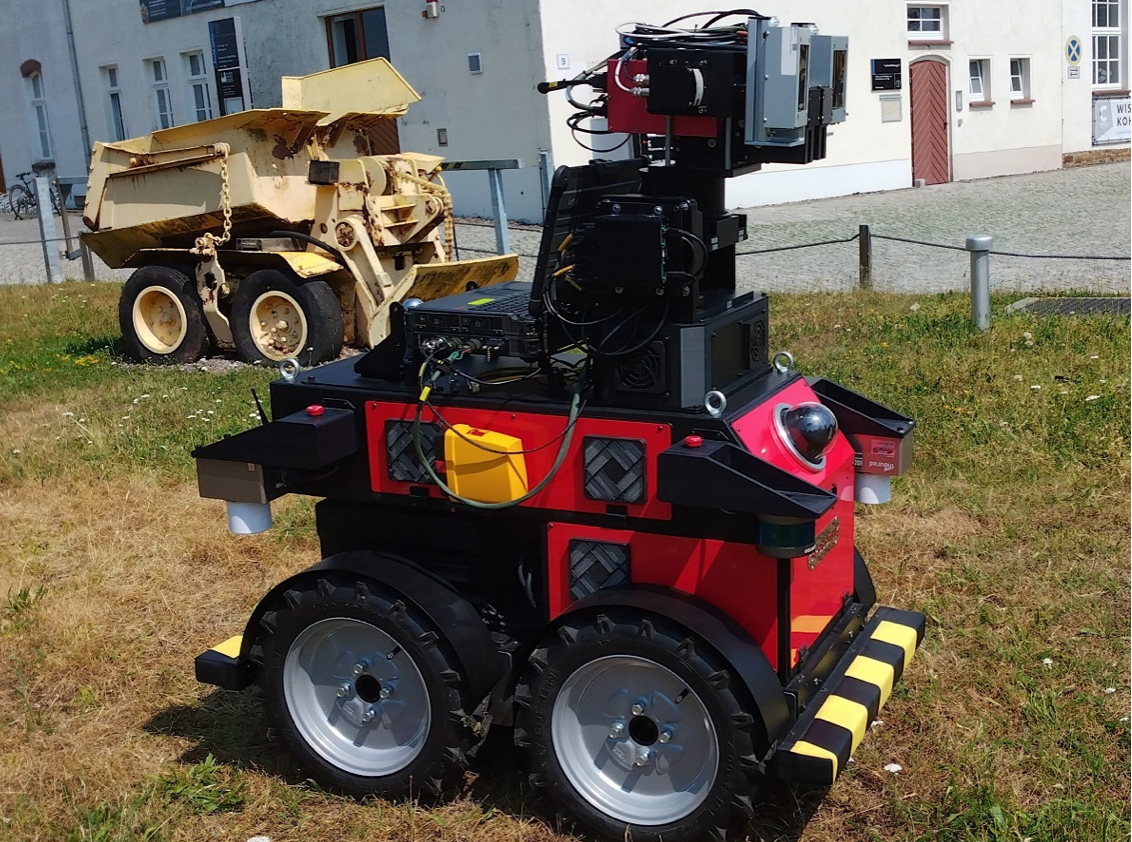
Scientists at the Technical University of Mining and Metallurgy of Freiberg, Germany, have developed an autonomous surveying robot. It is designed to autonomously record an unknown environment and use the data to create a three-dimensional model of a deposit. Starting in the fall, researchers at the University will test the robot above and below ground.
In the future, a multisensor system will provide basic data for developing new deposits and monitoring safety in mines. For the development of the new robot, the Institute of Mine Surveying and Geodesy (Sensor and Deposit Research Groups) joined forces with Professors Gerhard Heide (Mineralogy) and Bernhard Jung (Virtual Reality and Robotics).
The system consists of an electrically powered all-wheel-drive vehicle with sensor technology. Selected sensors, a stereo camera, profile laser scanners and an imaging surveillance camera are part of the standard equipment of a mobile robot.
“The technology is now supplemented with a high-resolution multispectral camera, three radar sensors and an inertial measurement unit. This equipment enables the robot to position itself precisely in the centimeter range. The hyperspectral camera enables an image-based analysis of rock surfaces,” explains Ralf Donner, an instructor at the Institute for Mine Surveying. The data from all sensors are fused into a so-called attributed 3D point cloud, forming the basis for analyzing the data.
Radar interferometry
“Difficult underground conditions such as fog and dust often prevent the individual recording of the deposit geometry with optical methods such as cameras or laser scanners. Radar sensors can penetrate these obstacles undisturbed due to their longer electromagnetic wavelength, providing a robust alternative. Radar interferometry in particular has proven to be a powerful technique for monitoring millimeter-scale changes in both surface satellite-based and stationary terrestrial environments,” says the researcher.
The research team aims to transfer this interferometric technique for highly accurate change detection to a non-stationary, subsurface environment. “This new measurement system is now ready for use. It will take its first measurements in a surface test course in the coming months,” says Prof. Jörg Benndorf. “As soon as the work on the shaft of the research and training mine is completed and the mine is accessible again, we will plan the first underground exploration trip.”
A digital model
Until then, instrument testing and automation of vehicle control remain the focus of further development. “As a first step, the system must drive safely autonomously in a known environment. Later on, it should also be able to autonomously explore an unknown environment,” says Ralf Donner.
According to the researchers, the automation of underground exploration and monitoring is essential to create a comprehensive digital model of a deposit. Once the optimized digital model is made available to experts, they can extract important information: “Where are valuable minerals located, how can they be mined effectively and what conditions are relevant for mine safety?” cites Prof. Jörg Benndorf as examples.
The multisensor system was funded by the German Research Foundation (DFG) and the Saxon Ministry of Science and Art.
Photo: The new multisensor system.
Also interesting: Eco-friendly and efficient mining based on X-ray analysis

